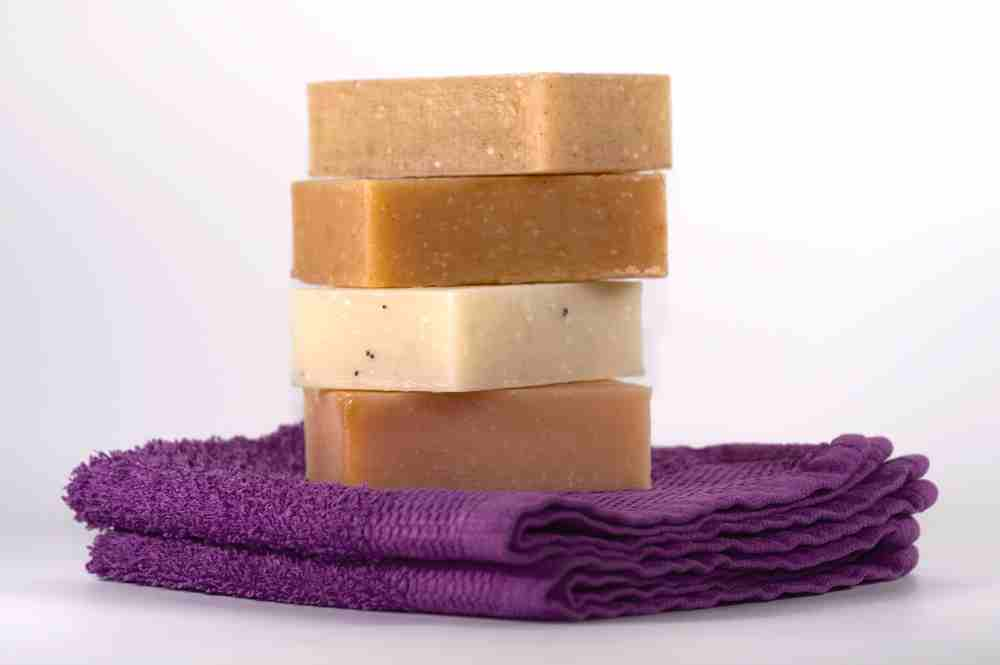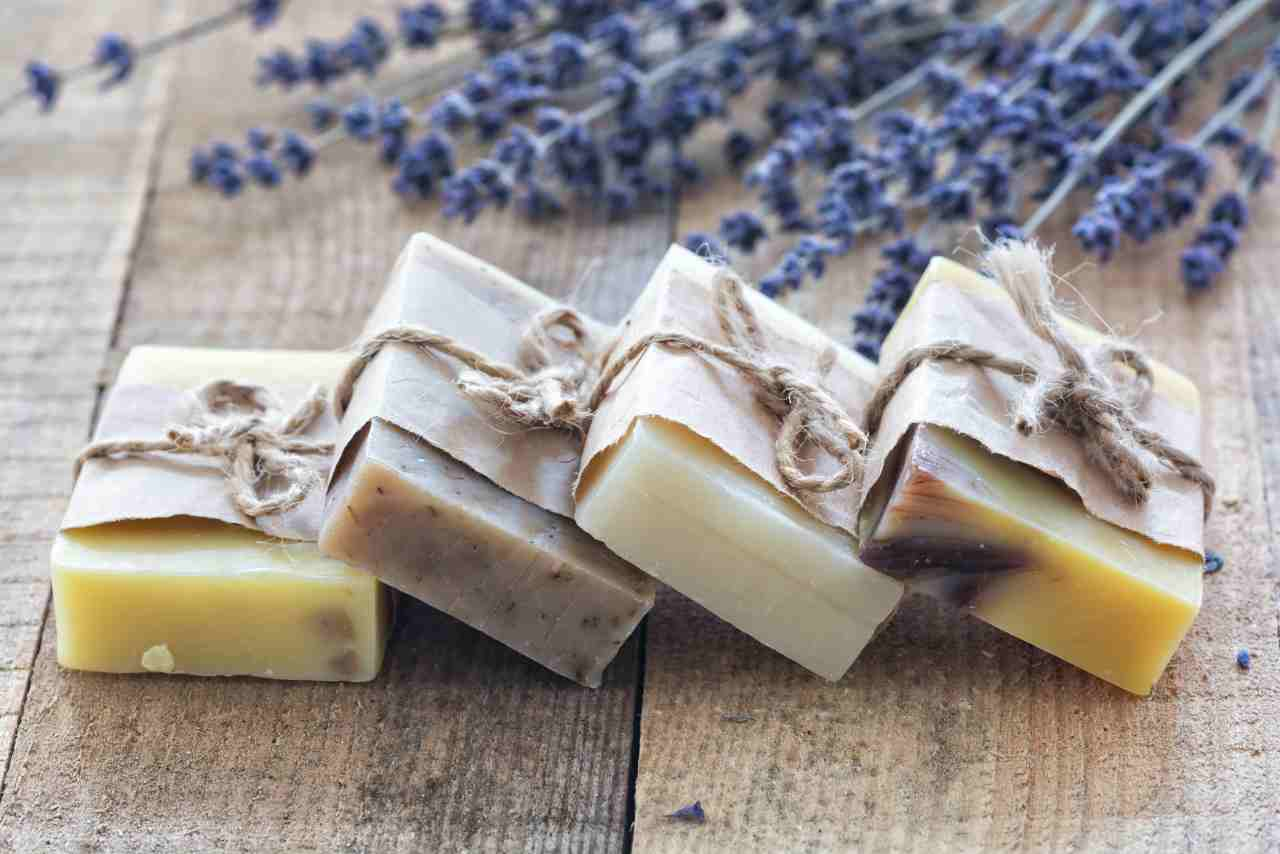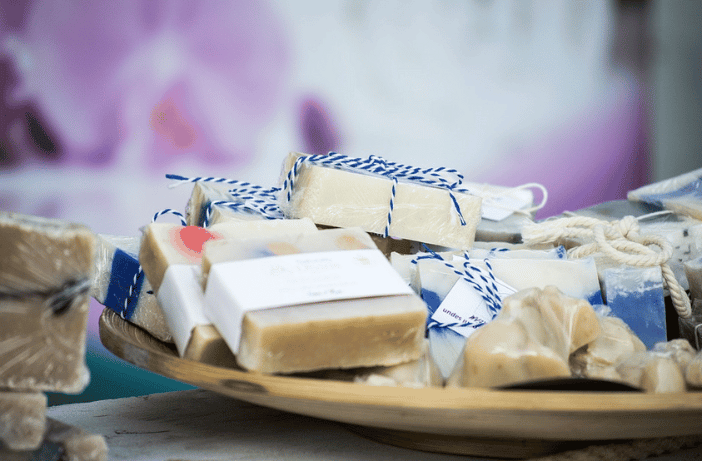The Soap Guy
Handmade Soap Recipes
Ever wanted to make your own soap from scratch? Here are a few of our favorite DIY recipes for cold processed soap! These are very beginner friendly and include ingredients you can find at your local grocery.

Simple 4 Oil Soap Recipe
- Olive Oil - 11 oz
- Canola Oil - 2 lbs 14 oz
- Coconut Oil - 3 lbs 3 oz
- Palm Oil - 3 lbs 7 oz
- Lye - 1 lb 8 oz (To be dissolved in water)
- Water - 3 lbs 1.5 oz
This is a great recipe to start with since it only contains 6 ingreidnets not including any fragrance or color you may want to add. Speaking of which, this recipe should make about 14-15 lbs of soap. If you wish to add fragrance you should keep it under 2% of the total batch weight. This means add no more than 5 oz of fragrance to this batch.
If you wish to add any exfoliants such as lavender buds, mint leaves, or ground oatmeal, start with a teaspoon and add more if needed. The smaller the exfoliant, the less you'll need to add.
Classic Lard Soap Recipe
- Lard (manteca/fat) - 4 lbs 1 oz
- Coconut Oil - 3 lbs 1.5 oz
- Canola Oil - 3 lbs 1.5 oz
- Olive Oil - 14 oz
- Lye - 1 lb 8 oz (To be dissolved in water)
- Water - 3 lbs 1.5 oz
This is an old school recipe, made espcially popular in the Southern US. Sometimes refered to as simply "Lye Soap", even though all soap must contain lye. Lard can be found at your local Wal-Mart. Either as lard or as "manteca" in the Spanish section. You could even use bacon grease if you were so inclined.
Lard makes a nice hard bar with great cleaning power. Lard soap does tend to carry a unique scent. Keep this in mind if you were planning on making an unscented batch. The smell of the lard will come through the finished soap. The weight of this batch is the same in all these recipes. Add no more than 5 oz of fragranceto your batch.


Easy Beeswax Soap Recipe
- Beeswax 4 oz
- Olive Oil - 1 lb 9 oz
- Soybean Oil - 6 lbs 4 oz
- Coconut Oil - 5 lbs 11 oz
- Palm Oil - 1 lbs 5 oz
- Lye - 3 lb (To be dissolved in water)
- Water - 6 lbs 4 oz
This is another fantastic recipe for beginers. Beeswax is great for dry skin as it helps lock in moisture. It also helps thicken the batch of soap, helping along the saponification process. Keep in mind beeswax has a distinct scent, especially if it's unrefined. This may come through in your finished soap if you add too much.
This batch is bigger than the other two recipes. This will yield approximately 25lbs of soap. Keeping to our 2% rule for fragrance, this means you should add no more than 8oz of fragrance.
Basic Instructions
Before we get started I wanted to mention that this is a short, rough guide. Please do your own research for safety precautions and deeper analysis the saponification process. Right here is just the CliffsNotes version.
The first thing you're going to want to do is mix up your lye and water. This combination will give off fumes, so make sure you're in a well ventilated area. Wear gloves, eye protection, and make sure you have access to running water. Take any and all saftey precautions. Lastly, do NOT use aluminum tools as they will have a dangerous reaction with the lye.
Slowly add your lye to your water while mixing thoroughly. Once the fumes have died down a bit, and the lye is 100% dissolved into water, you can let the mix sit until we're ready. Mixing the lye first allows it cool down before combining it to the oils.
Next, take all your oil ingredients and melt them together. Try and keep the temperature low if possible, as long as all the oils are melted and mixed together you should be fine. Keep in mind, things like butters and beeswax have higher melting points.
Once the oil is melted, you can add the lye/water mix we made earlier. Slowly add this to your oils while mixing thoroughly. The soap making process starts immediately after combining these two parts, and will continue for weeks after you've poured this batch into molds. Any fragrance, color, or exfoliants can be added before or after the combination of oils and lye/water. We personally like to add our extras after the combination, but both ways should work. The benefit of adding the extras before is it gives you more time to mix and pour the batch if it's reaching trace too quickly. That is, if your soap is solidifying rapidly. If you're using essential oils, we recommend adding them AFTER the combination of oils and lye/water. This is because essential oils are more delicate than fragrance oils and the lye can be too harsh when directly combined with essential oils.
Once the batch is starting to thicken up, pour it into your molds. You may want to cover the molds with a blanket or towel to keep the heat in. Check back in a day or two and they should be ready! It's that easy!
Low Price Guarantee
We guarantee we will not be undersold!
Shipping Guarantee
Free shipping for all orders over $180.
Privacy Policy
We will never share your information.
Quality Guarantee
100% satisfaction guaranteed.


